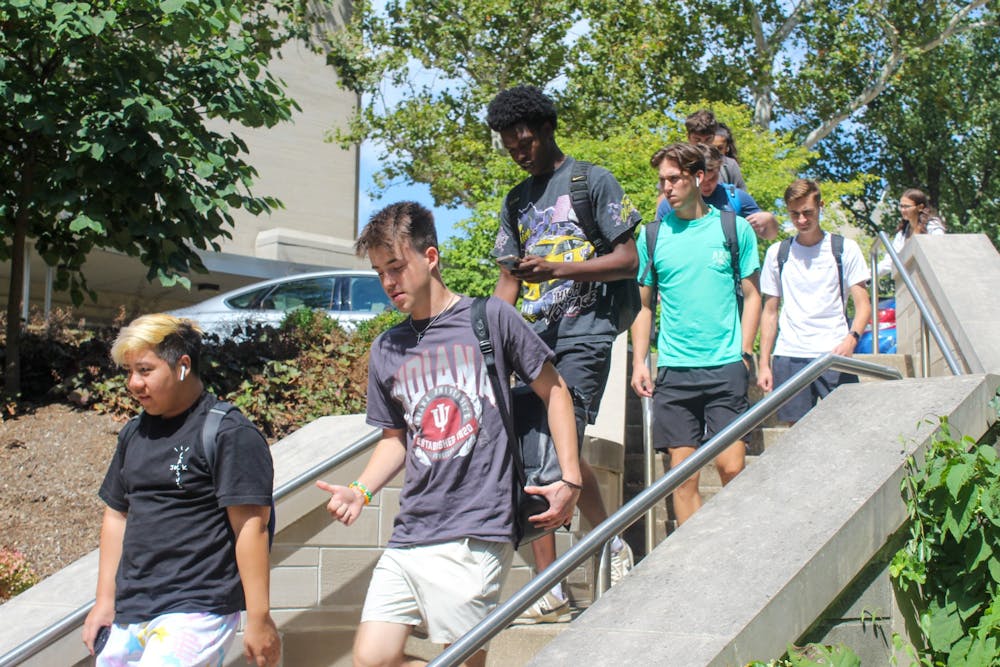Indiana University Bloomington welcomed 9,550 students this August as a part of its incoming undergraduates. But how diverse is IU Bloomington’s most recent freshman class?
Of the 9,550 undergraduates welcomed onto campus this year, 918 students are first-generation undergraduate students and 1,873 are members of historically marginalized populations, a record for the Bloomington campus, according to an IU press release.
For IU’s Institutional Analytics reporting, the count of historically marginalized students follows categories laid out by the federal government. Those categories include Hispanic/Latino or not, American Indian or Native Alaskan, Asian, Black or African American, Native Hawaiian or other Pacific Islander and White. The federal government also outlines the definitions of U.S. residents, non-residents and those whose race/ethnicity are unknown.
“When we look at historically marginalized it's a reference to any student who is part of a group who may not feel seen in the same way as someone who is coming through maybe a more majority identity population,” IU Executive Director of Admissions Sacha Thieme said.
Thieme said she thinks this could also include transfer students, multi-age or upper age students, LGBTQ+ students, veteran students, urban students and rural students. Thieme said if admissions is consistently challenging their process, outreach and bias to keep different groups in mind, she believes they can better serve everyone.
Regarding the Supreme Court's ruling that race cannot be considered as a single factor, Vice Provost for Enrollment Management David Johnson said the university will still collect student’s self-reported race for reporting purposes. However, the people reviewing and admitting students will not see that information.
IU used to consider race as one of several factors in a holistic review because they could, Johnson said. In the future, IU will continue to consider a student’s application, their grades, experiences, involvement and essay.
Thieme said the student demographic that grew the most this year is students who identify as Hispanic or Latino. She said students who identify as more than one category also experienced significant growth.
This year, there are more than 3,700 students who identify as Hispanic/Latino, according to IU data. Last year, the number of students who identified as Hispanic/Latino was more than 3,500.
According to the release, 72% of incoming students received gift aid, including scholarships and grants, and 1,568 beginner undergraduates will receive Pell Grants, which are awarded to undergraduates who demonstrate exceptional financial need. Beginner students, according to Thieme, do not include transfer students or students who are already enrolled. More than 400 students are 21st Century Scholars and 200 beginner students will receive the Pell Promise Award.
This year's freshman class also includes a record number of Indiana residents, more than 5,000 in total. Of the incoming freshman from Indiana, 212 attended high school in Bloomington, according to an IU press release.
Students from all 92 counties in Indiana are enrolled in the university this year, Johnson said.
“We have a bit more residents in the class this year than last year,” Johnson said. “It's slightly more residents than non-residents.”
A large number of non-residential students come from Illinois, New Jersey, California, New York, Texas and Ohio. He said enrolling students from diverse backgrounds and different areas of the country helps contribute to IU’s learning environment.
According to the press release, there are 5,161 Indiana residents enrolled this year, making the out-of-state enrollment population 4,389.
“You've learned from Indiana students...and from students from California and New York and everywhere in between.” Johnson said.
The percentage of historically marginalized students has continued to increase because of IU’s recruitment practices that attract, recruit and enroll diverse students, Thieme said. Johnson said the university works with community-based organizations that support low- or middle-income students, minority students and first-generation students.
There are also pre-college programs not specifically for diverse students, as well as different camps, competitions and academic, athletic and cultural opportunities for students to visit campus before enrolling, Johnson said.
One key program is the Navigate IU pathway program, Thieme said. It is an effort to introduce students to the college admissions process early, according to their age or high school status. It begins when a student is in the seventh and eighth grade, so admissions get access to those spaces and can generate excitement for college.
She said Navigate IU has been an intentional recruitment effort to connect with students and give them information important to their college journey based on their identities and where they are in the admissions college process.
Within the Navigate IU pathway program, Thieme said there is a program called Level Up, which allows parents and supporters to ask questions about IU.
“That Level Up space allowed families to come in, specifically for families of historically marginalized students, and ask some real questions about what could be expected from this experience,” Thieme said.
Thieme said IU needs students to know it’s committed to fostering a sense of belonging and inclusion. She said, IU strives for campuses to be representative of the community, state, nation and world.






